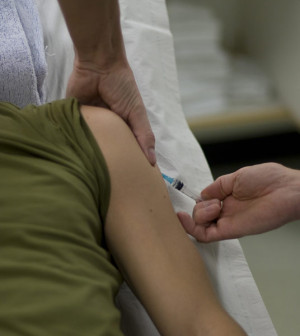- Skip Storing This Everyday Product in the Fridge Door
- Green Tea + B3 Pairing May Boost Brain Health
- Navigating Your Midlife Crisis: Embracing New Possibilities
- City Raccoons Showing Signs of Domestication
- Mapping the Exposome: Science Broadens Focus to Environmental Disease Triggers
- One Week Less on Social Media Linked to Better Mental Health
- Your Brain Changes in Stages as You Age, Study Finds
- Some Suicide Victims Show No Typical Warning Signs, Study Finds
- ByHeart Formula Faces Lawsuits After Babies Sickened With Botulism
- Switch to Vegan Diet Could Cut Your Greenhouse Gas Emissions in Half
Scientists Map DNA of Deadly Fungus


THURSDAY, April 17, 2014Researchers who sequenced the genome of a deadly fungus say their achievement offers a genetic map for finding weaknesses in the fungus in order to fight it.
Cryptococcus neoformans causes millions of cases of pneumonia and meningitis every year, says a team of scientists that spent 10 years decoding the DNA of one highly dangerous strain, called H99.
The mapping of the fungus’ entire genetic code, or genome, can be used to learn more about how the fungus causes illness and to find ways to prevent it from developing into even deadlier strains, the scientists said.
“We are beginning to get a grasp on what makes this organism tick,” study co-author Dr. John Perfect, a professor of medicine at Duke University, said in a university news release. “By having a carefully annotated genome of H99, we can investigate how this and similar organisms can change and mutate and begin to understand why they aren’t easily killed by antifungal medications.”
The study is published April 17 in the journal PLoS Genetics.
Perfect said he first isolated H99 from a patient with cryptococcal meningitis 36 years ago.
Cryptococcus neoformans primarily infects people with a weakened immune system, such as transplant recipients and patients with HIV/AIDs. The researchers found that the H99 strain became less virulent as they grew it in the laboratory.
“Virulence, or the ability of this organism to cause disease in mice or humans, is not very stable. It changes, and can rapidly be lost or gained. When the organism is in the host it is in one state. But when we take it out of the host and begin growing it in the laboratory it begins mutating,” senior study author Fred Dietrich, an associate professor of molecular genetics and microbiology at Duke University School of Medicine, said in the news release.
The next step is to mutate all of H99’s genes one by one to determine which ones cause disease, the researchers said.
They added that having a map of H99’s genome also provides them with a starting point for studying other strains of Cryptococcus neoformans.
More information
The U.S. Centers for Disease Control and Prevention has more about fungal diseases.
Source: HealthDay
Copyright © 2025 HealthDay. All rights reserved.










